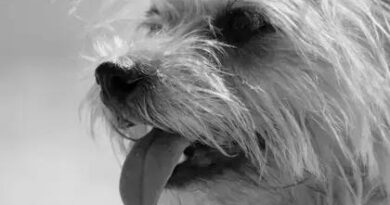What is fur trimming
What is Fur Trimming?
Fur trimming is a grooming technique that involves cutting and shaping the fur of dogs to maintain their appearance and health. This process is essential for certain breeds that have long or thick fur, as it helps prevent matting and tangling. Regular fur trimming not only enhances the dog’s aesthetic appeal but also contributes to their overall well-being by promoting better hygiene and comfort.
The Importance of Fur Trimming
Fur trimming plays a crucial role in the health of a dog’s coat. By removing excess fur, groomers can help reduce the risk of skin infections and irritations caused by trapped dirt and moisture. Additionally, trimming can help manage shedding, making it easier for pet owners to keep their homes clean. For breeds with double coats, such as Huskies or Golden Retrievers, proper trimming can help regulate body temperature, ensuring the dog remains comfortable in various weather conditions.
When Should You Trim Your Dog’s Fur?
The frequency of fur trimming depends on the dog’s breed, coat type, and lifestyle. Generally, dogs with long or continuously growing fur, like Poodles or Shih Tzus, require trimming every 4 to 6 weeks. Short-haired breeds may only need occasional trims to tidy up their appearance. It’s essential to monitor your dog’s coat and consult with a professional groomer to establish a suitable trimming schedule that meets their specific needs.
Tools Used in Fur Trimming
Professional groomers use a variety of tools for fur trimming, including clippers, scissors, and combs. Clippers are often used for larger areas and thicker fur, while scissors provide precision for shaping and detailing. Combs help detangle the fur before trimming, ensuring a smooth and even cut. It’s important for pet owners to invest in high-quality grooming tools if they plan to trim their dog’s fur at home, as this can significantly affect the outcome.
DIY Fur Trimming Tips
For those who prefer to trim their dog’s fur at home, there are several tips to keep in mind. First, ensure that your dog is comfortable and calm during the process. Use treats and positive reinforcement to create a positive grooming experience. Start with small sections of fur and gradually work your way through the coat, being cautious around sensitive areas such as the ears and paws. Always use the appropriate tools and techniques to avoid injuring your pet.
Common Mistakes in Fur Trimming
One of the most common mistakes in fur trimming is cutting too much fur at once, which can lead to uneven patches and an unkempt appearance. Additionally, using dull blades can cause discomfort to the dog and result in a poor grooming experience. It’s also important to avoid trimming the fur too short, as this can expose the dog’s skin to sunburn and other environmental hazards. Taking your time and being patient is key to achieving a well-groomed look.
Choosing a Professional Groomer
If you’re unsure about trimming your dog’s fur yourself, consider hiring a professional groomer. Look for groomers with experience in your dog’s specific breed, as they will be familiar with the unique grooming needs and styles. Reading reviews and asking for recommendations can help you find a reputable groomer who prioritizes the health and comfort of your pet. A professional groomer can also provide valuable advice on maintaining your dog’s coat between grooming sessions.
Fur Trimming for Show Dogs
For show dogs, fur trimming is not just about aesthetics; it is an essential part of preparing the dog for competition. Breeders and handlers often follow specific breed standards that dictate how the fur should be trimmed and styled. This meticulous grooming process can take hours and requires a skilled hand to achieve the desired look. Proper fur trimming can significantly impact a dog’s performance in the show ring, making it a vital aspect of their preparation.
Post-Trimming Care
After fur trimming, it’s important to care for your dog’s coat to keep it healthy and looking great. Regular brushing helps prevent matting and keeps the fur clean. Additionally, consider using conditioning sprays or products designed for dogs to maintain the coat’s shine and softness. Monitoring your dog’s skin for any signs of irritation or discomfort after trimming is also crucial, as this can indicate an adverse reaction to the grooming process.




